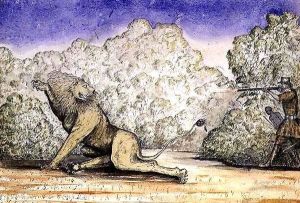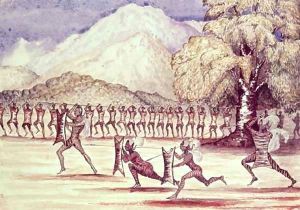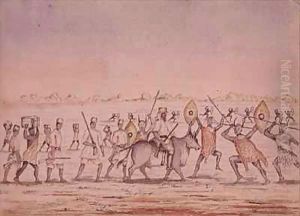Sir Samuel Baker Paintings
Sir Samuel White Baker was not primarily known as an artist but as a British explorer, officer, naturalist, big game hunter, engineer, writer and abolitionist. Born on June 8, 1821, in London, England, Baker was known for his explorations within Africa, especially his expedition to discover the source of the Nile River, which he undertook with his wife, Lady Florence Baker.
Despite being remembered more for his explorations and adventures, Baker did produce sketches and drawings that were related to his travels. His illustrations served as visual documentation of his journeys and were often included in his published accounts. These works, while not artistically groundbreaking, provide historical insights into the landscapes, peoples, and wildlife he encountered during his expeditions.
Baker’s life was filled with adventure and many achievements. Among his most notable was the discovery of Lake Albert in central Africa, which he named after Prince Albert, the consort of Queen Victoria. His travels were not only for discovery but also had a significant impact on the anti-slavery movement. He was appointed by the Ottoman Sultan to govern the territory of Equatoria in the Sudan, where he fought against the slave trade.
In his later years, Baker continued to write about his travel experiences, publishing several popular books such as 'The Albert N'Yanza, Great Basin of the Nile' and 'The Nile Tributaries of Abyssinia'. These works added to the understanding of African geography and were influential in the era of European colonial exploration of Africa.
Sir Samuel Baker died on December 30, 1893, in Newton Abbot, Devon, England. His legacy lives on through his written works, his contributions to the geographical knowledge of Africa, and his efforts to combat the slave trade. While he is not celebrated as a traditional artist, his illustrations remain a valuable artistic complement to his historical and exploratory achievements.


